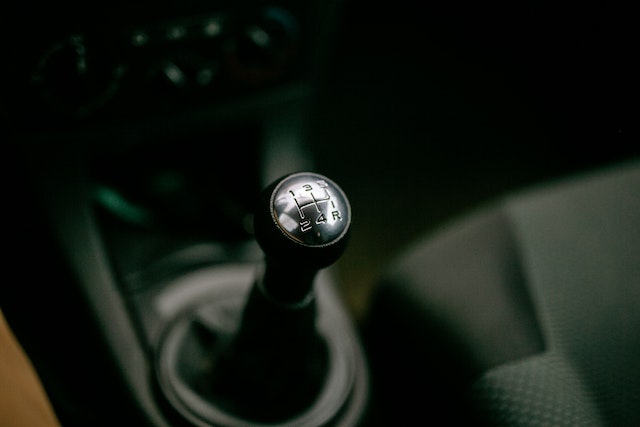
Why do cars only have five gears? They actually don’t. Some cars have 4 and some cars have 6 or 7. Modern cars have an infinite number and electric cars don’t have any. Most manual cars have five gears, but that doesn’t mean all cars have five. However, five is the most common number because the advantages to having more gears don’t outweigh the disadvantages.
Why do cars have gears? The gears provide more power to the wheels and they allow the car to go faster. A car’s engine is connected to the gearbox by the main shaft. The gearbox connects to the drivetrain, which sends the power to the wheels. When an engine is switched on, the fuel is burned, the pistons go up and down, and the main shaft spins. Very quickly the engine reaches 600 to 1000 RPM (Revolutions Per Minute). If the main shaft was connected directly to the wheels without a gearbox, the wheels would have to rotate at 1000 RPM. A car tire is about 60 cm in diameter and it does about 840 revolutions for every mile. If your car tires are spinning 1,000 times per minute, you are travelling at about 70 miles an hour. If you get the RPM of your engine up to 4000, you are going to be breaking land speed records. That is obviously not possible. The first thing the gear does is disconnect the wheels from the engine shaft and reduce the RPM reaching the wheel. The second thing the engine does is to increase the power. It takes a lot of energy to get a car moving. If your wheels spin at 1000 RPM, your car won’t have enough torque to move and the engine will stall. Low gears give the car more force and get it moving. Then higher gears transfer more RPM to the wheels. A combustion engine can only work well within a certain range of RPM. The gears keep the engine within that range of RPM.
So, what are the advantages of more gears? They give a smoother ride. When you change gear, the amount of RPM to the wheels change and the car jerks slightly. More gears mean less of an RPM change. More gears mean a car could get more torque at lower speeds and potentially climb steeper slopes. More gears also mean that a car could go faster when it is in the higher gears. A higher gear would reduce the amount of fuel you need to use to keep your car going fast. However, these changes are all minimal. There are more disadvantages. With more gears, you have more moving parts, which means more things to break. It will cost more to fix them and it will be expensive to install them. The extra speed and the extra fuel efficiency are minimal. If there were significant advantages to having more gears, then more cars would have them.
5 gears is the norm, but any car with gears is not going to be completely efficient. An automatic gearbox is more efficient than a manual car because the computer knows exactly when to change gear for peak performance, and humans are not able to do that. However, a lot of modern cars use something called a continuously variable transmission (CVT). This works by having a flexible belt over two pulleys. One of the pulleys is connected to the engine and the other is connected to the car’s wheels. These pulleys have cones in them that can move to increase or decrease the size of the pulley. By varying their size, they can very quickly go through an enormous range of gears. This means there is no lurching with the gear changes and no sound of the gears changing. The cars can increase or decrease speed very quickly and smoothly. They are also far more efficient than a regular transmission with gears because they can keep the car within the most efficient band of RPM, and they don’t lose momentum when they change gears.
CVTs are more efficient than manual and automatic transmission, but electric cars don’t have any gears at all. An electric car has a motor on each one of its four wheels. When the engine is switched on, and the accelerator is pressed, the electric motors start to spin. Electric motors can spin at much higher RPMs than a combustion engine and they don’t have any band of RPMs that they are most efficient in. They are as efficient at low RPMs as they are at high ones. Each motor is connected to a wheel and when they spin, the wheels spin. If you want to go faster, the motor just spins faster. There is no need to go through a complicated series of cogs. It is smooth and very efficient. Also, because of this system, electric cars don’t need brakes either. To brake, you only need to remove your foot off the accelerator. The motors will stop spinning and the car will slow down. And this is what I learned today.
Photo by Yan Krukau: https://www.pexels.com/photo/close-up-of-a-gear-shifter-in-a-car-5215655/
Sources
https://www.caranddriver.com/research/a30822055/what-is-a-cvt-transmission/
https://www.team-bhp.com/news/explained-6th-gear-needed-and-all-about-gear-ratios
https://jalopnik.com/i-have-determined-the-correct-amount-of-gears-1823891054
https://energyeducation.ca/encyclopedia/Gear
https://www.acko.com/car-guide/car-gear-box/
https://en.wikipedia.org/wiki/Manual_transmission
https://mechanics.stackexchange.com/questions/58588/why-do-vehicles-not-have-more-gears
https://www.autoguru.com.au/car-advice/articles/why-do-some-cars-have-more-gears-than-others
